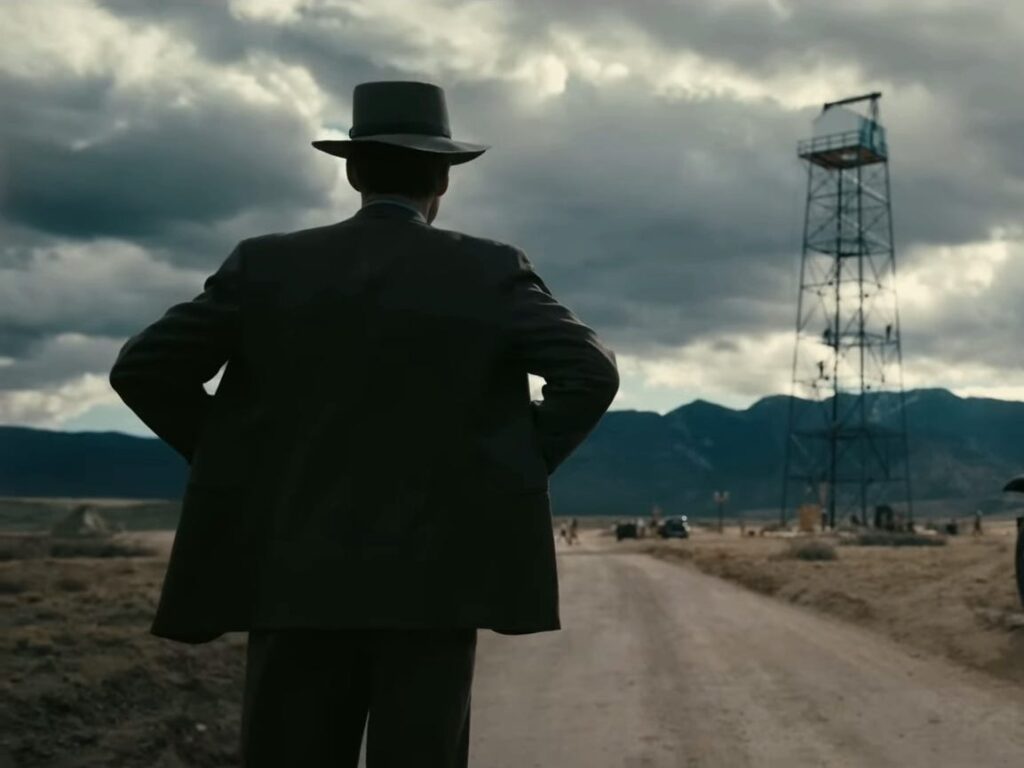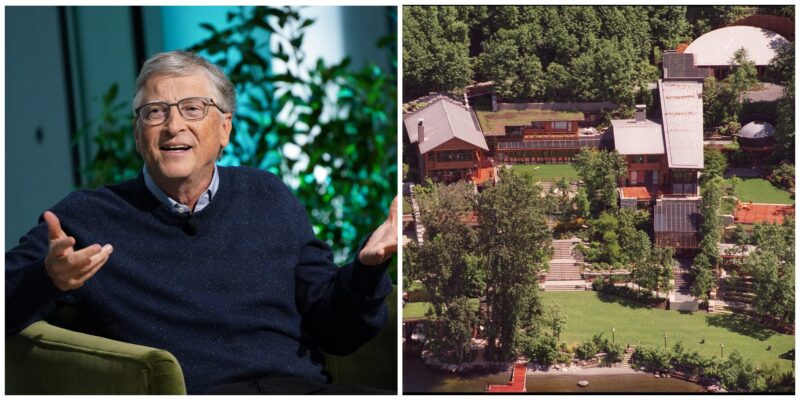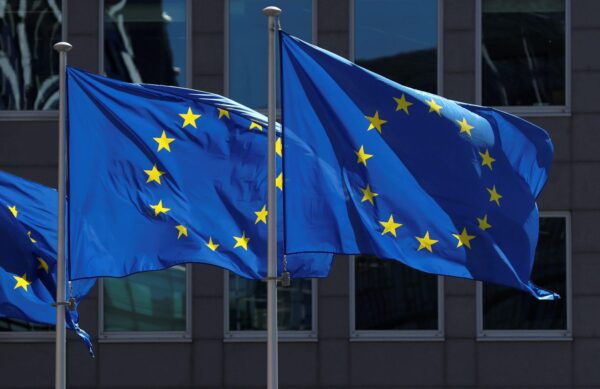- Atomic bombs work via a process called nuclear fission that involves atom splitting.
- Shortly after scientists discovered nuclear fission, the possibility of a bomb was quickly realized.
- Albert Einstein didn't make the first atomic bombs, but his famous equation explains how they work.
With its depiction of the first atomic bomb explosion, the new film, "Oppenheimer," highlights the massive destructive power of these early nuclear weapons.
While you might want to brush up on your physics before seeing the film — Cillian Murphy certainly did to play the role of J. Robert Oppenheimer — here's an explainer of how the first atomic bombs worked.
Splitting the atom
Atomic bombs work by splitting atoms via a process called nuclear fission. It's called "splitting" because essentially you're taking one atom and dividing, or splitting, it into two.

The center of atoms is comprised of tiny particles called protons and neutrons.
Fission, which was discovered in 1938, occurs when an atomic nucleus is hit with a neutron. It splits, producing two lighter elements and, more importantly, a few neutrons and some energy — both are key to atomic weapons.
Shortly after scientists first discovered they'd split the atom, the quantum physics community — including Albert Einstein and Oppenheimer — figured out that it could be used to produce an enormous bomb.
If fission starts with a certain minimum amount — known as critical mass — of radioactive material like uranium and plutonium, it causes a chain reaction, Zaijing Sun, a nuclear physicist at the University of Nevada Las Vegas, told Insider.

In the nuclear chain reaction, each neutron released by fission goes on to split another atom, producing more neutrons that split more atoms at a faster rate. As more atoms split, the extra energy left over builds and builds — almost instantaneously producing the explosive power of the atom bomb, Sun said.
In a single atomic bomb explosion, billions of atoms split within a millionth of a second.
Einstein's famous equation explains how atom bombs work
The first atomic bomb ever detonated, known as the Trinity test, used about 13 pounds (6 kilograms) of plutonium and generated an explosion equivalent to 21,000 tons of TNT.
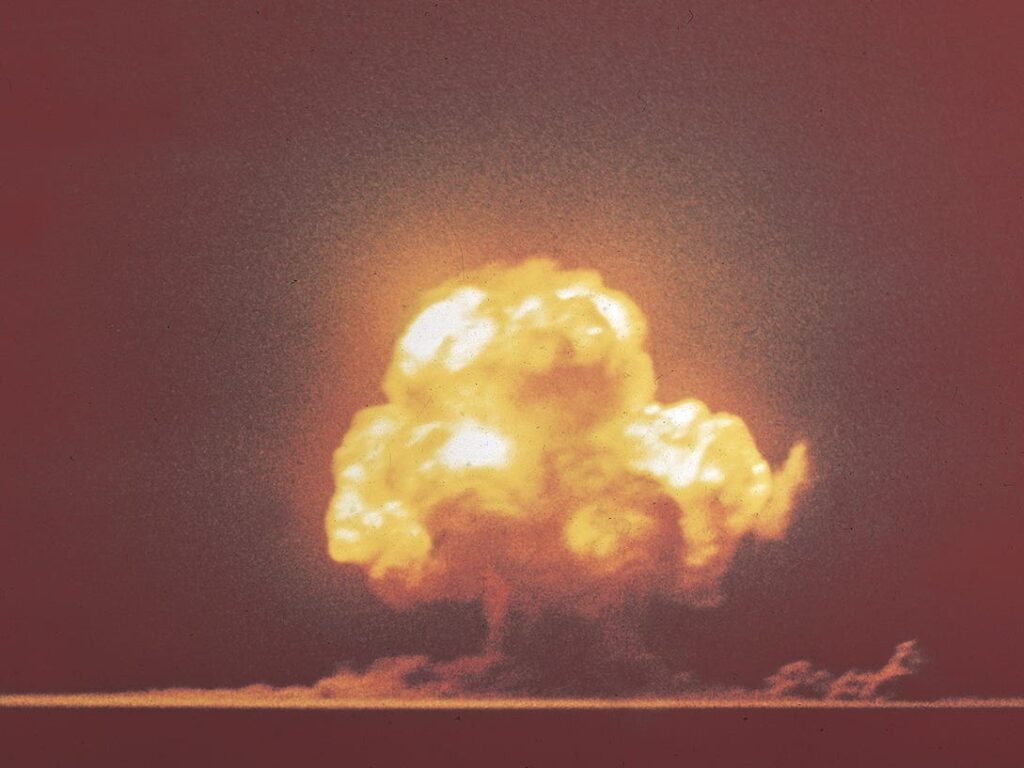
The atomic bomb dropped over Hiroshima contained about 140 pounds of uranium and produced a blast equivalent to 15,000 tons of TNT.
But the bombs weren't totally efficient in their use of fuel — just a small part of the nuclear material actually underwent fission.
In fact, only about half a gram of the total uranium in the bomb dropped over Hiroshima was converted to energy — creating the entire force of the explosion.
But how is such a relatively small amount of matter capable of producing so much power?
It has to do with Einstein's famous equation: E = mc2, which means "mass and energy are essentially the same thing, so any mass can turn into energy," Sun said.
For example, when a neutron hits a uranium-235 atom, the combined mass of the two new, lighter elements and the neutrons is less than the original atom of uranium-235 — not by much, but it is measurable.
That tiny amount of missing mass is what's transformed into pure energy, Sun said. It's that energy that is capable of nearly destroying an entire city.
Later, scientists developed an even more powerful weapon. Called a hydrogen bomb, it uses both nuclear fission and fusion — the binding of atoms — to produce a weapon 1,000 times more powerful than the atomic bomb dropped over Hiroshima in 1945.
Building the bomb
During World War II, scientists were well aware of the potential of using nuclear fission to create a weapon.
Amid fears that Germany was working to make a bomb, Oppenheimer was appointed director of the Los Alamos lab in New Mexico — part of the United States' top secret Manhattan Project tasked with building the atom bomb.
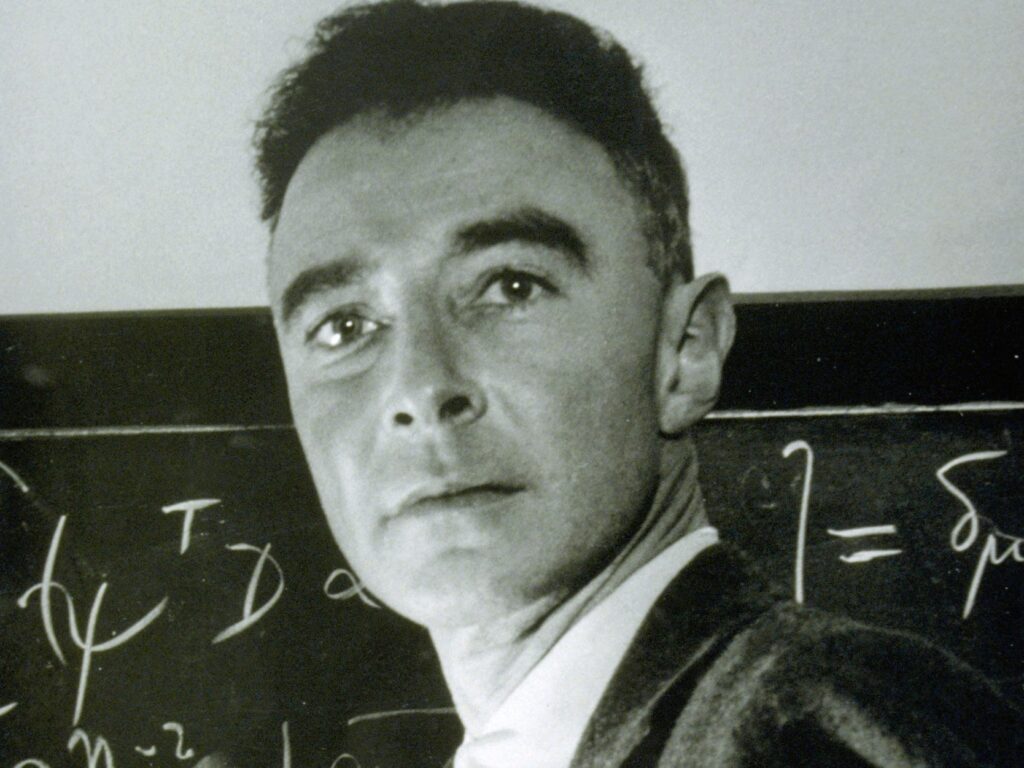
The Manhattan Project took about three years to complete its mission — employing over 130,000 people at its peak and costing $2.2 billion dollars by the end of the war (about $38 billion in 2023 dollars).
The scientists designed and completed two different types of atomic bombs because they weren't sure which method would work. One was powered by uranium, the other by plutonium.
Uranium has a number of different isotopes — that is, the same chemical element with a different number of neutrons. Naturally occurring uranium is composed mostly of the U-238 isotope and contains small amounts of U-235. But an atomic bomb requires high concentrations of U-235 because it's the form that readily undergoes fission.
A lab at Oak Ridge, Tennessee, created this "enriched" uranium that contained a high concentration of U-235 to serve as fuel for the bomb — nicknamed Little Boy — that was dropped over Hiroshima.
Little Boy featured a gun-type detonation method. The bomb contained two separate cores of uranium and used a conventional explosive to shoot one core into the other. When the two cores of uranium hit each other, critical mass was reached, causing an atomic explosion.
While uranium was mined and enriched for use in a bomb, plutonium actually had to be created.
Plutonium is produced by bombarding U-238 with neutrons. The U-238 atoms absorb a neutron, which sparks a series of nuclear changes that transform it into plutonium.
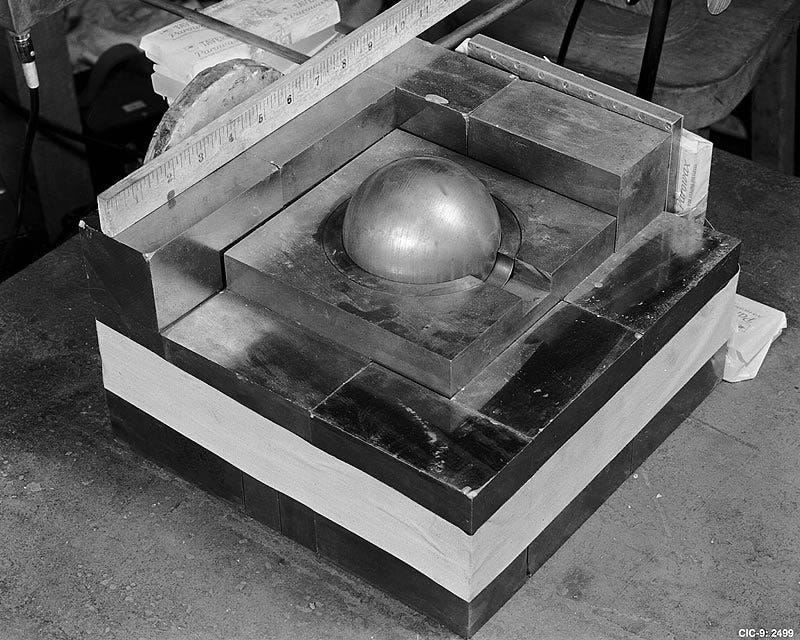
Nuclear reactors in Hanford, Washington, produced plutonium and sent it to Los Alamos for assembly of the "Fat Man" bomb that the US dropped over Nagasaki.
Fat Man was an implosion-type bomb, featuring a core of plutonium surrounded by explosives. When detonated, the force of the explosives crushed the plutonium together until it became dense enough to reach critical mass.
Since scientists working on the Manhattan Project weren't quite sure if the plutonium bomb's implosion method would work, they decided to test one before it was used in the war.
So on July 16, 1945, at 5:29 a.m, in the New Mexico desert, the Trinity test detonated a plutonium bomb called "Gadget," — the world's first nuclear bomb — and ushered in the atomic age.
